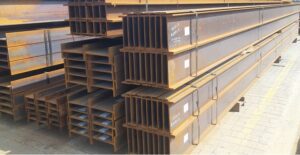Comparing Stainless Steel and Mild Steel: Understanding the Differences in Pipe, Tube, Sheet, Angle, and Flat Bar
Stainless Steel (SS) and Mild Steel (MS) are two of the most commonly used materials in the construction and manufacturing industries. While they are both used for a variety of applications, there are significant differences between the two that are important to consider when making a selection. In this article, we will compare SS and MS pipe, tube, sheet, angle, and flat bar to help you make an informed decision for your next project.

Materials and Manufacture
Stainless Steel is an alloy of iron, chromium, and nickel. It is highly resistant to corrosion and staining, making it an ideal choice for applications where high levels of hygiene are required, such as the food and pharmaceutical industries. Stainless Steel is also resistant to high temperatures, making it suitable for applications where high heat is a concern.
Mild Steel, on the other hand, is a low carbon steel that is commonly used for a variety of applications, including construction and manufacturing. Unlike Stainless Steel, Mild Steel is not highly resistant to corrosion or staining, and it is not suitable for high temperature applications. However, it is a relatively inexpensive and readily available material that is easy to fabricate and machine.
Strength and Durability
Stainless Steel is a strong and durable material that is well-suited for high-stress applications. Its resistance to corrosion and staining makes it a popular choice for applications that require high levels of hygiene, such as the food and pharmaceutical industries. Additionally, its high resistance to high temperatures makes it ideal for applications that require resistance to heat.
Mild Steel is also a strong and durable material, but its lack of resistance to corrosion and staining makes it less suitable for applications that require high levels of hygiene. Additionally, its relatively low resistance to high temperatures makes it unsuitable for applications that require resistance to heat.
Cost
Stainless Steel is typically more expensive than Mild Steel due to its high levels of resistance to corrosion and staining, as well as its resistance to high temperatures. This makes Stainless Steel an ideal choice for applications where high levels of hygiene and resistance to heat are a concern, but its higher cost may make it less suitable for applications with limited budgets.
Mild Steel, on the other hand, is less expensive than Stainless Steel due to its lower levels of resistance to corrosion and staining, and its lower resistance to high temperatures. This makes Mild Steel an attractive option for applications where cost is a concern, but its lower levels of resistance to corrosion and heat may make it less suitable for high-stress applications.
Uses
Stainless Steel is commonly used in a variety of applications, including the food and pharmaceutical industries, where its high levels of resistance to corrosion and staining are a major concern. Additionally, its high resistance to high temperatures makes it ideal for applications that require resistance to heat, such as high-temperature valves and fittings.
Mild Steel is also used in a variety of applications, including construction and manufacturing. Its low cost and ease of fabrication make it a popular choice for applications where cost is a concern, but its lower levels of resistance to corrosion and heat may make it less suitable for high-stress applications.
In conclusion, the choice between SS and MS pipe, tube, sheet, angle, and flat bar will depend on the specific requirements of the application, including resistance to heat and corrosion, strength, durability, and cost. By considering these factors, you can make an informed decision that will ensure the success of your project.
Comments are closed.